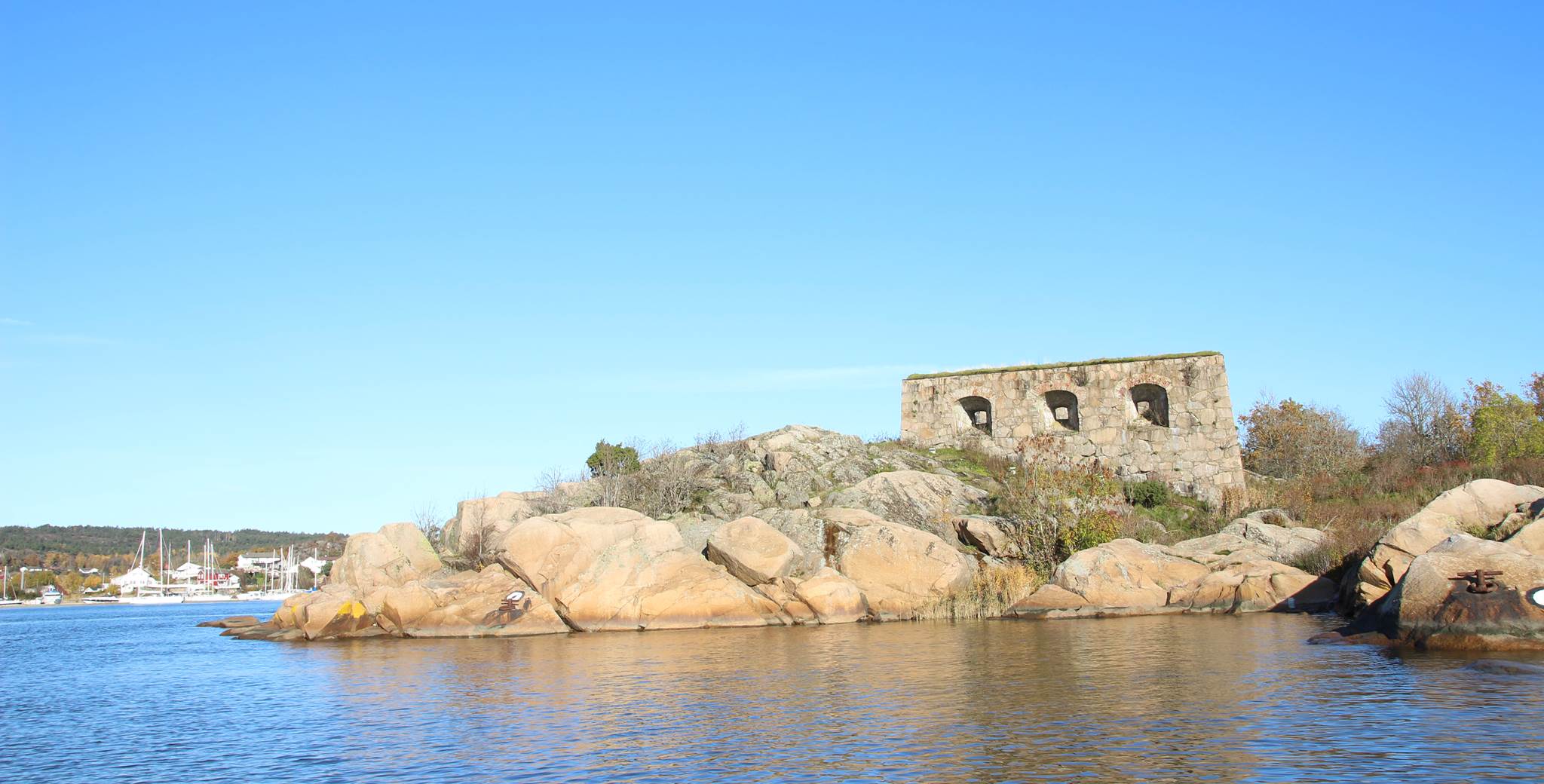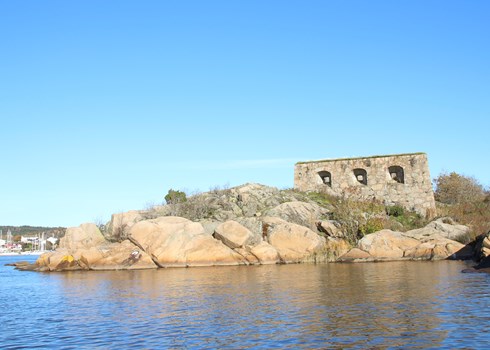

Hvaler, Østfold (Viken)
Owned by the National Trust of Norway since 1937.
From the war of 1814 to cholera quarantine station. The fort was built between 1788 and 1791 with a single rough-hewn granite blockhouse measuring approx. 15 x 20 metres, a battery wall approx. 10 metres high and two free-standing batteries. Huth fort was part of the outer fortifications of Fredrikstad Fortress. However, it was never completed – the timber superstructure and roof were never built. The fort was initially intended as a defence against Sweden, but the first task it was allocated was to protect the Norwegian fleet in 1807 during the Napoleonic Wars, and it also fired its guns during the brief war with Sweden in 1814.
A dangerous enemy. During the period 1831–1834, the fort again proved useful. This time, the threat was not from the Swedes, but an even more dangerous enemy, and the fort was put to use as a quarantine station during a cholera epidemic. Maintenance was discontinued in 1872, and the fort’s military life came to an end when Fredriksten Fortress, and with it Huth fort, was officially decommissioned in 1903. The Ministry of Defence donated Huth fort to the National Trust of Norway in the late 1930s.
Things to do in the area. There are a lot of things to do in the area, with an idyllic archipelago, the old town in Fredrikstad, history, and a variety of art and cultural experiences ranging from the Østfold Museum Foundation’s museums to the House of Literature in Fredrikstad.
Sources: En reise gjennom norsk byggekunst, ed. Terje Forseth. The National Trust of Norway, 1994.
Opening hours
Ticket prices
Visit us
Kjerringgholmen, Hvaler1680 Skjærhalden
